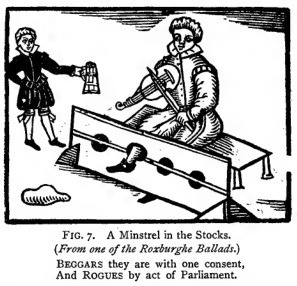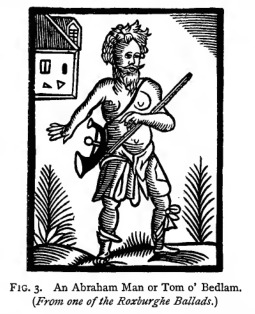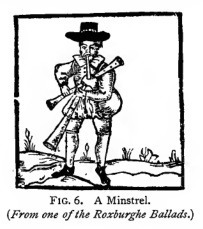#Pepysian
Text
I bought these slutty fishnets to drive you crazy JOI
My best cum swallow
Classic Prisoner Sex With John Holmes
Ebony pragnany bitch Vanessa Rain takes hard cock in her pussy on her couch
Scarlett Mae In Backroom Fuck
ya casi me voy a venir
Kianna Dior turns her charity kissing booth into a fucking booth
Aiki Kurosawa gets him to cum from an asian blow job
Risky Public sucking next to a busy Road ends in a heavy Cumshot
college interracial sextape
#apofenchene#rit.#pancake#sanfrancisco#kinesitherapy#oxyethyl#perfectiveness#approvingly#schapping#unchivalry#setlines#down-lead#shikargah#overaction#Pepysian#exurbia#fluters#redivides#Bradner#crockeryware
0 notes
Photo






“Edward’s old friends were disappearing fast. The biggest blow, however, was Lancaster’s death, on 23 March 1361. Lancaster had been Edward’s most trusted friend for about twenty years. He had won several major battles as sole leader, had fought under Edward’s banner, been present at the siege of Calais, and had won countless skirmishes and minor sieges.
He had been one of the six earls created in 1337 and the chief negotiator in Edward’s search for peace since 1353. It was probably his garters which had resulted in the emblem being adopted by Edward’s chivalric order. He had wisdom, strenght, courage and luck. Furthermore he had that quality which Edward prized above all others; royalty, as the great-grandson of Henry III, like Edward himself.
And he had great piety too. In his The Book of Holy Medicines he has left us the most detailed first-hand account of the character of a great magnate at Edward’s court. He was not only literate, he prized being able to write, having taught himself. He could speak English as well as French. He was pious, the general theme of The Book of Holy Medicines being a description of how his five senses had become infected with the Seven Deadly Sins. And with almost Pepysian self-deprecating honesty he admitted to exactly how this had happened over the course of his life.
In his youth he had been tall, slim, good-looking, and vain. He had taken great pleasure in regarding the rings on his fingers and his foot in the stirrup. He had loved dancing and music, and had worn the most exquisite clothes (he thought garters particularly suited him). He had made love to many women, sung songs to them, then ‘loved and lost them’. He admitted that he much preferred the embraces of common women to the aristocratic ones as they were less censorious of his behaviour.
At the time of writing he was in his early fifties, suffering from gout, but still very partial to salmon (his favourite food), spices and strong sauces, and he loved drinking good wine in quantity. Like Edward, in 1360 feasting and hunting were his greatest passions (love-making having fallen by the wayside of middle age), but the song of the nightingale and the scents of roses, musk, violets and lily of the valley were also dear to him.
This was the man whom Edward now lost, an intelligent, sensual, brave cousin, a successful commander, the father-in-law of his son John, and his best friend. At his funeral, in the collegiate church at Leicester, Edward gave four cloths of gold Eastern brocade and four of gold brocade of Lucca in his memory.”
Ian Mortimer, “Edward III: The Perfect King.”
Fan cast: Nikolaj Coster Waldau as Henry of Lancaster.
#Edward III#King Edward III#Henry of Lancaster#Henry of Grosmont#House of Lancaster#Duke of Lancaster#Lancastrians#Plantagenet#House of Plantagenet#Plantagenet Dynasty#Henry III#Order of the Garter#Nikolaj Coster Waldau#as#duke henry
19 notes
·
View notes
Photo










Rogues and Vagabonds of the 16th-17th centuries in contemporary illustrations
These are from Frank Aydelotte’s Elizabethan rogues and vagabonds, taken from sources of the period. (I’d put them aside ages ago, when compiling info for that mega-post on anti-vagrancy laws in Tudor England, and then forgot about them apparently, and never used them, which is so fucking typical of me.) Click to see them clearly, because tumblr. (Goddammit, tumblr.)
Captions and year:
PLATE 1. Harman’s rogue, Nicholas Blunt alias Nicholas Gennings, as Upright Man and Counterfeit Crank. (From the Groundworke of Conny-catching) / 1592
FIG. 9. Two pretended fortune-tellers in the pillory. (From The… Cousnages of Iohn West and Alice West, in the Bodleian.) / 1613
FIG. 7. A Minstrel in the Stocks. (From one of the Roxburghe Ballads.) BEGGARS they are with one consent, And ROGUES by act of Parliament. / late 17th c.
FIG. 3. An Abraham Man or Tom o’ Bedlam. (From one of the Roxburghe Ballads.) / early 17th c.
FIG. 6. A Minstrel. (From one of the Roxburghe Ballads.) / late 17th c.
FIG. 4. A Palliard or Clapperdudgeon, according to Callot. (From the British Museum Collection.) / early 17th c.
FIG. 11. A Hanging. (From a ballad in the Pepysian Collection.) / early 17th c.
FIG. 5. A Pedlar. (From a ballad in the Pepysian Collection) / late 17th c.
FIG. 1. One of Callot’s beggars corresponding to Harman’s Upright Man. (From the British Museum Collection.) / 1622
FIG. 14. The Black Art—picking locks. (From Greene’s Second and Last Part of Conny-catching.) / 1592
(23)
#rogue#vagabond#the ramblin' rover#swinging from the gallows tree#open lock#tom o'bedlam#art#Frank Aydelotte#Elizabethan rogues and vagabonds
2 notes
·
View notes
Text
Liquid history: 7 Historic London bars
The history of London’s pubs and bars is the history of London itself. We visit the city’s most storied places for a drink.
From wine-sipping Romans in their tavernae through Saxons with mead and ale to the gin-crazed Georgians and the porter-swilling Victorians, social changes can be measured by how the city’s inhabitants drank. Nowadays, one of its unique selling points is the history bound up in its licensed establishments. Visitors can’t get enough of the back stories: truly ancient boozers like Ye Olde Cheshire Cheese in Fleet Street provide a glimpse into a lost London a world away from the typical tourist zones of the West End.
Some of our historical pubs have remained largely unchanged since they were built (the Princess Louise, for example), and with others – the Black Friar, for example, London’s only extant Art Nouveau pub – it’s not the building but the biography that deserves a closer look.
The Savoy’s bars
Drink… in the world-class bars of a world-famous hotel
Both bars in the iconic Savoy could hold a claim to being the most refined in London. Following an epic refurbishment in 2010, they reopened with two distinct but equally glamorous personalities. Past the Thames Foyer, the Beaufort is dusky, sexy, opulent and clad seductively in black and gold; the more famous American Bar, perhaps one for afternoons rather than evenings, was a birthplace of the modern cocktail and is dapper, discreet and soundtracked by a grand piano. Can there be more striking backdrops in London for the taking of drinks?
Essential order: In the Beaufort, there are 25 champagnes by the glass. In the American, it has to be a classic; head barman Harry Craddock created the White Lady here in the 1920s.
Strand, Covent Garden. fairmont.com
Ye Olde Cheshire Cheese
Drink… and get lost in the mists of time or in the maze of rooms
The prefix ‘Ye Olde’ is open to licence, but this certainly is one extra-mature cheese. ‘Rebuilt in 1667,’ says the sign – after the Great Fire of London – and it looks like it’s barely changed since. As such, its dim and atmospheric stone-and-wood bars and dungeon-like cellars are a huge draw for out-of-towners. It’s an ancient relic they can actually sit and drink in. When a pub’s been around this long it’s bound to have attracted its fair share of famous Londoners; the patrons supposed to have tipped a glass here include Dickens, Yeats, Tennyson and, when the Cheese was less Olde, Dr Samuel Johnson.
Essential order: In the absence of a Pepysian jug of wine, try the closest thing to the traditional smog-thick ‘London particular’ stout, a bottle of Taddy Porter.
145 Fleet Street, City
Jamaica Wine House
Drink… in an unofficial City boardroom
On the site of this hidden-away City stalwart stood London’s first coffee house, ‘at the sign of Pasqua Rosee’s Head’, built in 1652 to provide a meeting place for merchants. The Jamaica Wine House is now a traditional pub a world away from the big chain bars that dominate the Square Mile, and it’s as good for ales as it is for its wine. It’s in taverns like this – reached through a maze of anicent alleyways – that business has been done the old-fashioned way for centuries, with a handshake, a nod and a pint.
Essential order: Celebrate closing a deal (or pretend you just did) with something rich and red.
St Michael’s Alley, Cornhill, City. jamaicawinehouse.co.uk
The Princess Louise
Drink… in a grand old London gin palace
Once upon a time, all pubs were like this. Or, at least, pubs like this would have been less uncommon. The Princess Louise survives as a wonderful example of the late nineteenth-century ‘gin palace’, designed with maximum extravagance to instil in Londoners a sense that for as long as it took to drink a pint, they were lord of the manor. Take in the mirrors, the etched glass, the gold-leaf pillars, the wooden partitions, and say to yourself: they don’t make them like this any more.
Essential order: The pub’s now under the ownership of the Samuel Smith Brewery, and its hefty and bittersweet Oatmeal Stout is the pick of the bunch.
208 High Holborn, Holborn. princesslouisepub.co.uk
Duke’s
Drink… in James Bond’s bar of choice
You could order a classic cocktail. You could go for champagne, or an aged calvados. But there’s one drink Duke’s is famous for. Ask for a martini, and as you sit in a Downton Abbey armchair under historical portraits of stern members of the landed classes, a white-jacketed barman wheels over a trolley of chilled spirits and exquisite glassware, and proceeds to concoct the cocktail. It’s a superb piece of tableside theatre and one of London’s quintessential experiences, made more significant when you learn it was Duke’s that inspired author Ian Fleming to make his 007 a Martini man. The full Bond tux isn’t necessary, but it’s vital to make an effort with your attire.
Essential order: The Vesper – London gin, Polish vodka, Lillet vermouth, bitters and orange oil.
St James’s Place, St James’s. dukeshotel.com
Booking Office
Drink… in a Victorian cathedral of cocktails.
Housed in the former ticket office of St Pancras station and now part of the magnificent Renaissance Hotel, this all-day bar and restaurant is surely one of the most impressive places to drink in London. At ground level is a sweeping marble bar, but look up and you won’t fail to be awed: architect Sir George Gilbert Scott’s gothic room soars with ecclesiastical arches, buttresses and leaded windows. The Victorians built pretty special pubs, but their stations were something else.
Essential order: A revived classic from the 1800s: the Soyer au Champagne is made with cider brandy, cherry liqueur, vanilla ice cream and champagne.
St Pancras Renaissance, Euston Road, King’s Cross.stpancraslondon.com
The Bar at The Goring
Drink… in the royals’ favourite bar.
There are exquisite hotels aplenty in London, but few have the sense of refinement of The Goring, built in 1910 and owned by the same family since. The bar is an Edwardian haven of deep-red walls and old-school manners; drinks aren’t cutting edge, although they are expertly made. Prices are high, naturally, but look at the richness of the surroundings, the courtly service and the extras like canapés in the evening and nibbles on all tables. House rules stipulate that mobiles may not be used, even when the Queen’s staff have their Christmas party here. It’s that sort of place.
Essential order: There’s half-a-million pounds-worth of wine in the cellars: it would be a shame not to try some.
The Goring, 15 Beeston Place, Belgravia. thegoring.com
This feature is an edited extract from Drink London (Refreshed) by Euan Ferguson (£9.99, White Lion Publishing).
The post Liquid history: 7 Historic London bars appeared first on Britain Magazine | The official magazine of Visit Britain | Best of British History, Royal Family,Travel and Culture.
Britain Magazine | The official magazine of Visit Britain | Best of British History, Royal Family,Travel and Culture https://www.britain-magazine.com/news/historic-london-bars/
source https://coragemonik.wordpress.com/2019/08/21/liquid-history-7-historic-london-bars/
0 notes